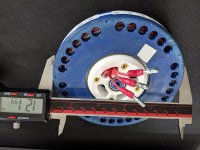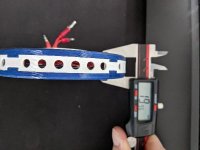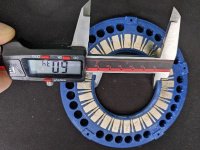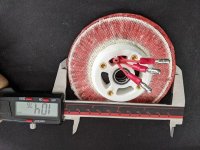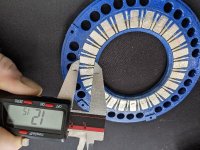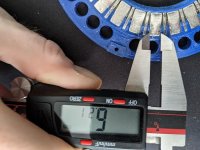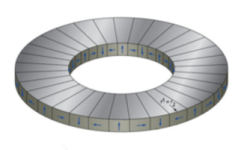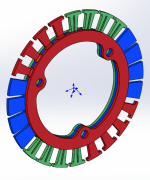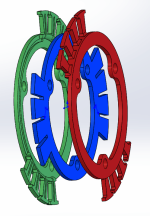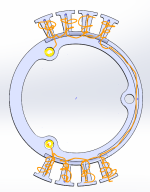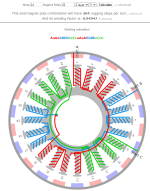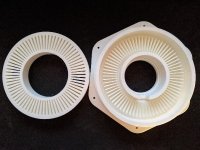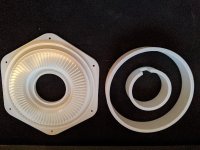mxlemming
100 kW
- Joined
- Jul 17, 2020
- Messages
- 1,120
Can you clarify the dimensions of all your bits? Especially the inner and outer radius of the magnet circle?
From your last scope shot i see 35hz=2100erpm, 12pole pairs, 0.8V so you're somewhere in the region of 210kV
I've got a thread going about trying to make a radial flux iron core motor but I'm completely failing to get stators... One Chinese company wanted 1200usd for 5 stators to my design... I cannot find off the shelf sensible stators, they're all crazy pole numbers like 36n42p.
So I'm possibly back to axial flux coreless. The idea of a fully 3d printed motor on my ebike is still appealing, but I'll be limited to about 120mm (probably 150mm absolute max). I'll need about 1/3 your kV so possibly going to multi rotor or increasing the diameter would be enough.
The no load efficiency and spin down times are also very very attractive.
How much does this latest one weigh? I can accept up to about 2kg which is probably vastly more than this.
From your last scope shot i see 35hz=2100erpm, 12pole pairs, 0.8V so you're somewhere in the region of 210kV
I've got a thread going about trying to make a radial flux iron core motor but I'm completely failing to get stators... One Chinese company wanted 1200usd for 5 stators to my design... I cannot find off the shelf sensible stators, they're all crazy pole numbers like 36n42p.
So I'm possibly back to axial flux coreless. The idea of a fully 3d printed motor on my ebike is still appealing, but I'll be limited to about 120mm (probably 150mm absolute max). I'll need about 1/3 your kV so possibly going to multi rotor or increasing the diameter would be enough.
The no load efficiency and spin down times are also very very attractive.
How much does this latest one weigh? I can accept up to about 2kg which is probably vastly more than this.


